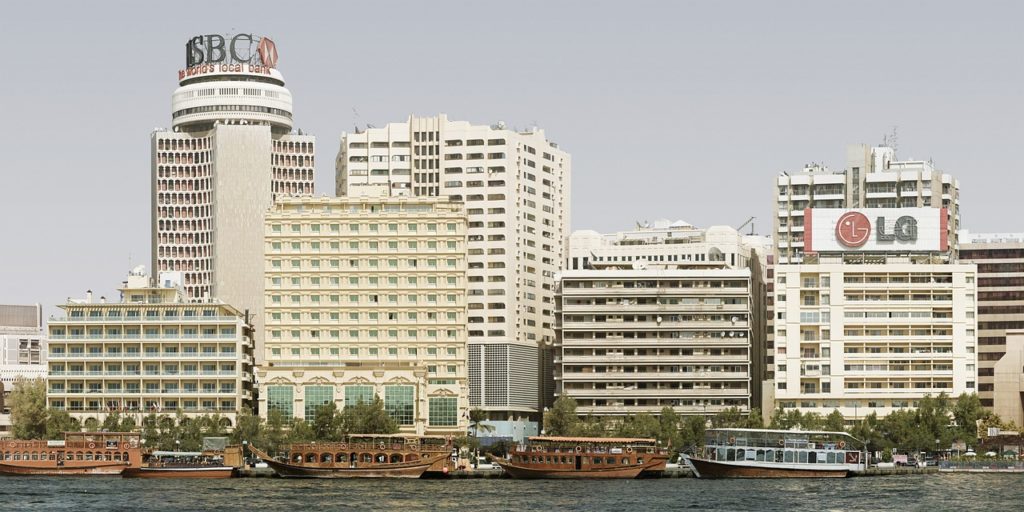A set of complex conditions, including dwindling supply and skyrocketing demand, has led to a water shortage in many Middle Eastern countries. While water supply has long been an issue in this region, which is defined by desert landscapes and arid climates, increasing urbanization, improving quality of life, and population growth have magnified the problem.
Those seeking a solution have faced a number of natural and man-made obstacles. The water supply in the Middle East is naturally limited because the area receives little rainfall, and most of the region is desert that can be subject to long droughts and unpredictable rainfall. Meanwhile, population growth has significantly increased the demand for food and the need for agriculture, a major consumer of fresh water.

The quality and quantity of the groundwater supply in countries such as Saudi Arabia and Qatar have been severely reduced, thus adding to the water supply shortage. Water has been overdrawn from aquifers, and the quality of the remaining water has been compromised with runoff from nearby areas that contains fertilizer, brine, and bacteria from sewage. As people in cities live better lifestyles, municipalities are using more water to keep up public parks, while private residents now use water to wash cars and garden. Industry, which can use significant amounts of water in production processes, also is increasing.
Public policies also contribute to the problem. For example, water tariffs are low compared to the high cost of water production, which makes the overuse of water affordable.
In response to the expanding crisis, government and other leaders are being forced devise creative solutions to limit water usage, maintain the water supply, and find new sources of potable and non-potable water.
Here are some of the solutions that have been proposed:
Conserve water—One straightforward way to save water is to limit use by all users, including individuals and large corporations.
Installing low-flow fixtures in everything from showers to kitchen sinks can curtail water usage. These devices will slow the flow of water, reducing the total amount used by washing dishes, showering, and other hygiene practices. Composting toilets and waterless urinals are more radical solutions, but these water-free fixtures could slash water usage if installed in commercial buildings. Flow restrictors and electronic controls will also minimize water usage.
Reduce industry use—Building systems use vast amounts of water in boilers, chillers, cooling towers, and washing machines. One way that industries can decrease their use of water is to incorporate non-potable water, such as rainwater, into their systems, while keeping tabs on leaks, and monitoring their water consumption.
Rein in outdoor watering—People use a significant amount of drinkable water to water outdoor landscaping. However, a variety of technologies and strategies easily can reduce this use, including installing more efficient irrigations systems such as drip irrigation, bubbler distribution systems, and weather-based irrigation controls. Mulching, installing less turf, and landscaping with native plants also can reduce outdoor potable water use.
Reclaiming wastewater—Currently, many communities dump untreated sewage into the desert or the sea, and treating and reusing this wastewater could reuse otherwise unusable waste and reduce the health and environmental dangers posed by sewage-borne bacteria. While many Middle Eastern communities lack wastewater reuse infrastructure, investing in it would be cheaper than transferring and storing water from elsewhere or building desalination plants to separate freshwater from seawater.
Some Middle Eastern governments have privatized the development of wastewater treatment facilities, some with large-scale plans to treat a large percentage of communities’ sewage. When communities experience a low demand for treated wastewater, they have considered other uses such as forestry, agriculture, and recharging ground water. It also can be used to water golf courses and landscaping and in construction work and district cooling.
Address agricultural irrigation—Farming and watering parkland make up the majority of water use, and officials have been working with farmers for several years to implement more sustainable farming methods. After educating farmers about the scarcity of water, they encourage them to grow a variety of native crops and install high-tech irrigation systems and water meters.
The success of sustainable agriculture will be crucial to industry and to the future of the region’s water supply. With groundwater supplies dwindling, the region also must look to alternative sources of water such as treated wastewater and desalinated water.
Without solutions, the water shortage in the Middle East could have dire consequences. A 2015 analysis from the World Resource Institute predicts a “surge” in the demand for water in coming years as more people move to cities and the middle class grows. Classifying much of the Middle East as “extremely highly water stressed,” the analysis notes that shortages already have contributed to political and social unrest and to farmers and herders losing their livelihoods and moving to cities to find work.
The solutions lie with governments on all levels to support action plans and management practices that conserve water supplies and promote sustainable practices. With smart strategies in place, a stable water supply will protect the economies and resources far into the future.

